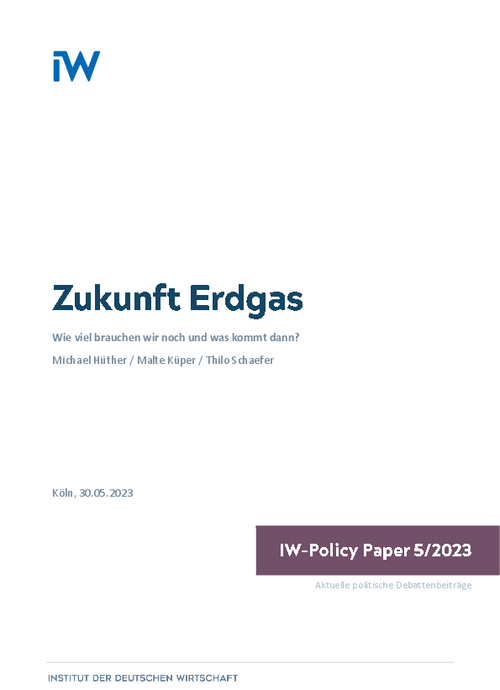Natural gas has become increasingly important for Germany in the last three decades, be it for heating buildings, providing process heat in industry or generating electricity. At the same time, the dependence on imports of natural gas has risen to almost 100 percent in recent decades, with most of the imports coming from Russia.

The future of natural gas: how much more do we need and what comes next?

Natural gas has become increasingly important for Germany in the last three decades, be it for heating buildings, providing process heat in industry or generating electricity. At the same time, the dependence on imports of natural gas has risen to almost 100 percent in recent decades, with most of the imports coming from Russia.
Accordingly, Germany's energy supply was hit hard last year by the failure of its largest gas supplier. Part of this can now be compensated for by the increased import of liquefied natural gas. The United States, in particular, sent LNG tankers to Europe. The lower LNG demand from China, the largest buyer of LNG, came at the right time from the EU's point of view and created the free capacity on the world market that was urgently needed in Europe. As a result, LNG, as well as gas savings from households and industry as well as additional pipeline imports from Norway, made a decisive contribution to securing the supply situation. Germany, which has only been operating its own LNG terminal since the end of last year, benefited from LNG terminals in Belgium and the Netherlands in 2022. By summer 2024, further floating LNG terminals will be built on the German North Sea and Baltic Sea coasts and gradually secure gas supplies in Germany. While concerns about empty gas storage facilities and cold apartments for the coming winter still remain, there are already signs of a permanently higher price level for natural gas in Germany when an easing has set in compared to the large price jumps in autumn 2022. On average, LNG has been more expensive than pipeline gas in recent years and the world market will remain tight in the coming years in view of the high demand, especially from Asia. A return to pre-crisis prices is therefore not to be expected in the foreseeable future. As a result, the competitiveness of Germany as a business location remains impaired and the bridging technology of natural gas is wobbly.
The changed price path increases the transformation pressure to reduce gas consumption faster than previously planned and to enable households and companies to switch to competitive climate-neutral energy sources as soon as possible. However, the key alternatives to natural gas as a bridging technology, renewable electricity and climate-neutral hydrogen, are a long time coming. A look at the expansion figures for wind and solar power in recent years shows that the targets for 2030 can only be achieved by accelerating the annual expansion that has not yet been achieved. When it comes to establishing a climate-friendly hydrogen supply, the achievement of national electrolysis targets by 2030 also remains uncertain. Importing large quantities of hydrogen by 2030 is also proving difficult. In order for the energy transition to gain momentum, consistent political decisions are necessary. These serve not only to achieve the climate targets, but also to establish a competitive, climate-neutral energy supply in Germany in the near future. In view of the significantly deteriorated price situation for fossil fuels, "business as usual" is not an alternative, a transitional period of several years without the prospect of foreseeably better location conditions is too long for the entrepreneurial investment horizon. The broad and cost-effective availability of renewable energies and the green energy sources generated from them are the key to making the "bridge" of natural gas smaller than previously planned and thus making the heat and transport transition a success in addition to the energy transition. The sooner this succeeds, the more likely it is that profitable climate-friendly business models will emerge that do not require government support. Until then, state funds will be needed with the highest priority for infrastructure expansion. What is needed are effective, unbureaucratic funding instruments, incentive-compatible regulation, functioning infrastructures as well as political investment in energy partnerships, resilient supply chains and international coordination of climate policy.

The future of natural gas: how much more do we need and what comes next?

More on the topic

Climate Clubs as a Lightning Rod for Tensions in Trade and Industrial Competitiveness
The Paris Agreement has established a transformative paradigm. While this transformation will create winners and losers, it now seems increasingly clear that overall, there are tremendous opportunities.
IW
German Industry's Options for a Secure Supply of Raw Materials
In recent years German industry has seen a rise in the risks attached to its procurement of raw materials.
IW